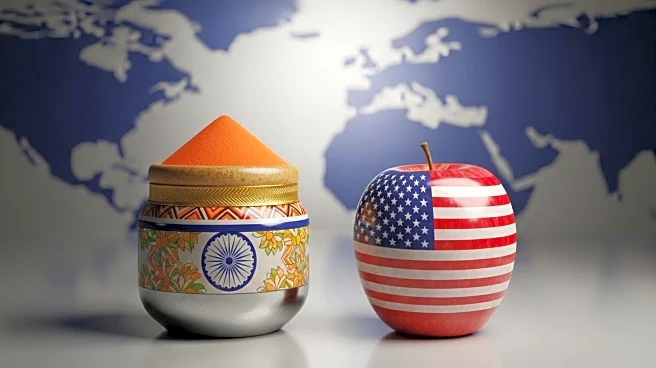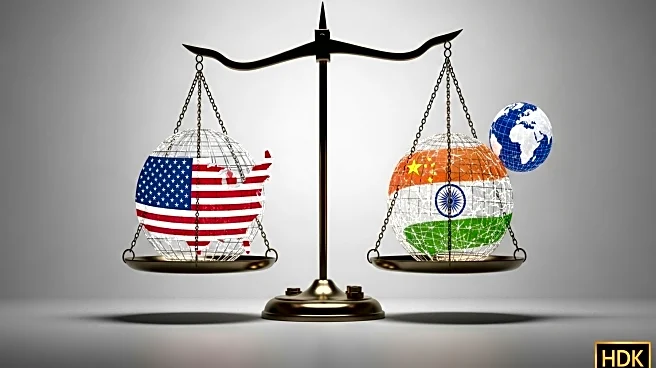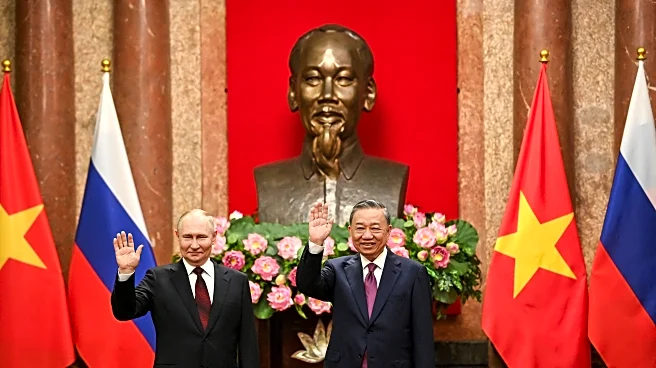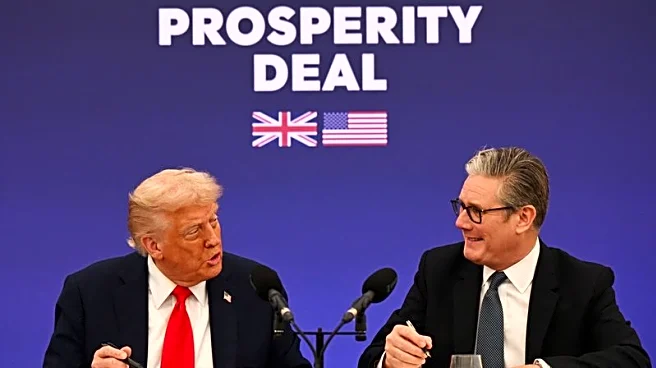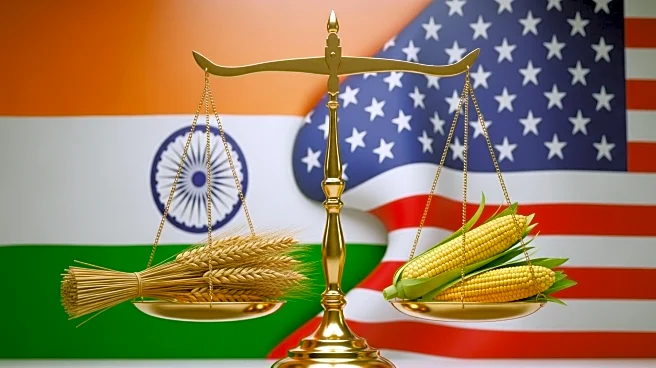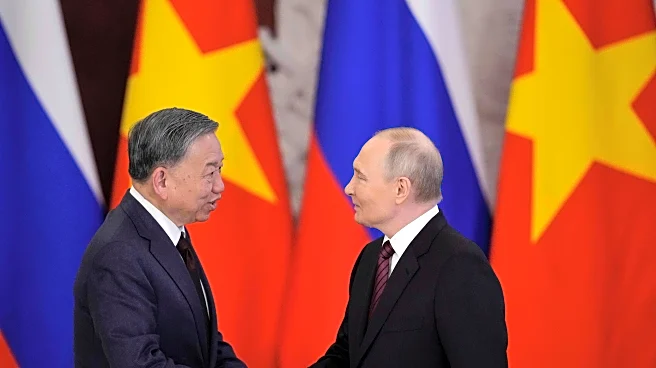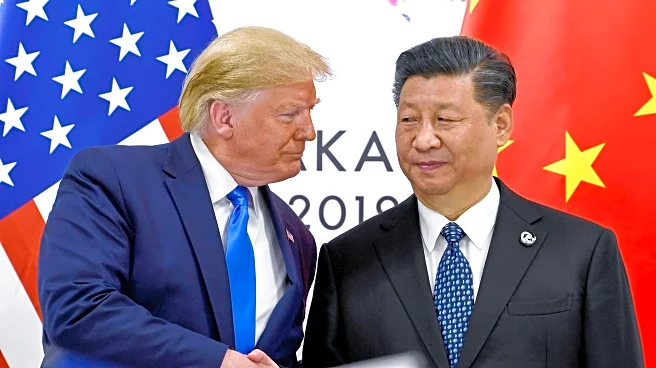What is the story about?
What's Happening?
India and the United States are set to continue discussions aimed at finalizing a bilateral trade agreement, with a focus on agricultural tariffs. Commerce and Industries Minister Piyush Goyal will lead a delegation to the U.S. on September 22, 2025, to advance these talks. The negotiations have been complicated by the U.S.'s imposition of a 25% tariff on Indian imports, alongside an additional penalty due to India's crude oil imports from Russia. The U.S. seeks reduced tariffs on agricultural imports from India, which could impact Indian exports such as shrimp, rice, and dairy products. In 2024, India's agricultural exports to the U.S. were valued at $5.7 billion, with significant exports including shrimp, rice, and honey. Conversely, India imported $1.9 billion worth of agricultural products from the U.S., including almonds and pistachios.
Why It's Important?
The ongoing trade talks are crucial for both nations, as they navigate the complexities of agricultural tariffs that affect significant portions of their economies. For India, reducing tariffs could pose risks to its agricultural sector, which employs a large portion of its workforce, particularly small and marginal farmers. These farmers rely heavily on government support and could face increased competition from subsidized U.S. agricultural products. For the U.S., expanding export markets is vital due to its agricultural output exceeding domestic demand. The resolution of these tariff disputes could impact global agricultural trade dynamics, affecting prices and market shares for both countries.
What's Next?
The next steps involve further negotiations between India and the U.S., with meetings scheduled for October-November 2025 to finalize the trade agreement. Stakeholders, including farmers and industry leaders, will be closely monitoring the outcomes, as changes in tariffs could significantly impact their operations. The discussions will also consider the broader implications for food security and economic stability in both countries.
Beyond the Headlines
The trade talks highlight deeper issues such as the disparity in agricultural subsidies between the U.S. and India. U.S. farmers benefit from substantial subsidies, which can distort market prices and affect global competition. In contrast, Indian farmers receive limited support, making them vulnerable to international market fluctuations. The negotiations could also influence future trade policies and relations between India and other global partners.
AI Generated Content
Do you find this article useful?
